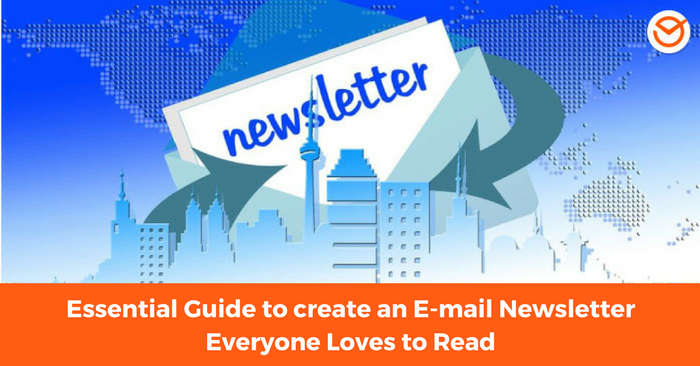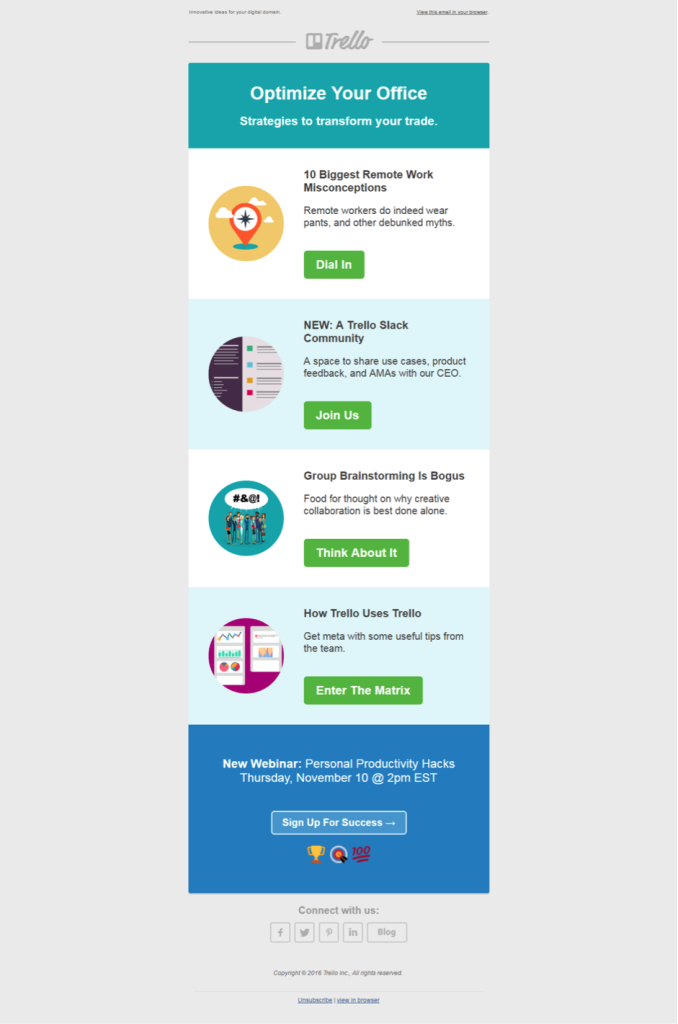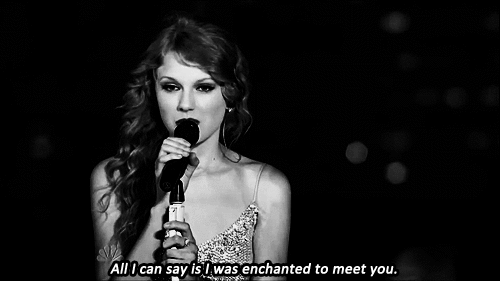An e-mail newsletter? Isn´t that something of the past?
Currently, brands have a number of marketing tactics available; but none are as strong and versatile as the bulletins sent through emails, better known as e-mail newsletters.
Why do I refer to a “strong” newsletter? Without repeating myself of sighing, I turn to specific data:
-
Because they are one of the most used tactics by marketing experts. Regardless of where they are in the world, more than 80% agree they have included them in their content arsenal this year.
-
Because more than half of those mentioned above agree it´s a powerful conversion generator.
-
Because it´s considered the most important content distribution channel by 91% of the B2C marketing experts .
-
Because 40% of B2B marketing experts believe it’s a successful key factor of their strategy.
But as any tactic you implement, if you don´t maintain it correctly, your newsletter can loose strength and even your most loyal followers can ignore your emails if they feel you are not meeting their needs.
If you are taking your first steps toward implementing a newsletter for your brand, or you are looking to optimize your campaigns, you have come to the right place. Get comfortable and eat a cookie.
12 Key Points to create the most effective email newsletter around
1. Define what business objectives you want to reach with your email newsletter
Decide what organizational objectives you want to share, beyond that of complying with a great content distribution channel:
- build an audience,
- improve your engagement levels,
- sell more,
- cross-sell,
- keep users and current clients, or
- create brand awareness.
2. What type of email newsletter do you want to send?
A common mistake done by many is when they try to add all the information in one place, resulting in a disorganized and unfocused piece. The product updates are under a press clipping, which are next to a blogpost, located under a birthday wish for Pepe, the new administration employee.
Try to switch places with the readers for just one second…Can you find something interesting for them?
Keep in mind that not all your content is interesting to everyone on your list. If you don´t establish clear objectives and create an adequate segmentation, your newsletter can be on it´s way to being rejected.
3. Create a balance between content and promotion
Maybe your subscribers are interested in what you offer, but don´t necessarily want to hear about it all the time. They may have not yet purchased your product/service and are enjoying a free trial (example: Apps or SaaS) or you want to convince them to upsell or cross-sell, concentrate first on offering them educated and relevant content.
Mention, one of the most popular monitoring tools and respect carefully this criteria in your email newsletter, since blogposts as well as resources don´t aim directly at sales (or in the case of signing up for the paid version):
People like to be informed about promotions and special discounts, but sales should not be the main focus of a newsletter. For this I recommend that
you only use heavy artillery in a promotional and personalized emails when the metrics have detected you have a very interested lead that is interested in what you are offering.
This criteria is also applied by Mention. For example, this content email arrived in my inbox once I subscribed to the newsletter days after I attended their webinar. In the email, they invite me to download an eBook “to see how Mention helps marketing experts and top executives sleep better”:
4. Establish clear expectations: what should they expect from you?
Once you have established the objective and content of your email newsletter, make sure you communicate this on your landing page, widget or plugin in order to gain subscribers.
Be specific and get to the point.
Let your future subscribers know exactly what type of content they are going to find in your newsletter and how often.
Beyond giving your readers predictability, setting clear expectations can help you lower the unsubscribe rates, while avoiding being reported as spam.
Blog posts right out of the oven, useful resources and fun gifs each Friday is what the Mention team promised me when I subscribed to their newsletter. And that is exactly what I received (see point 3).
5. Write an irresistible email subject
If you think the most difficult task is to seduce your audience so they can be part of your VIP list, think again. This is only the beginning. Because even if they subscribe to your emails, there is no guarantee they are going to open them…
Unless, the email subject line gets their attention. It needs to be different, creative, captivating and stir an emotion.
I could write about this for a long time, but to dive into this topic would deviate from the objective of this post, so I invite you to find tips to be creative with the subject line of your newsletters in point 1 of this article: The Perfect Caption.
6. Write concise copy and choose a minimalist design
In 2006, a study by Jacob Nielsen claimed that a person invested on average, approximately 51 seconds in reading a newsletter. This a an optimistic number considering that 10 years later, another study claims that the human being has an attention span of 12 seconds, one second less than a goldfish.
Be direct, clear and to the point. No one is going to spend all day, not even on his or her weekend to read your email newsletter. Make sure your content is scannable; present it in blocks, with blank spaces, large tittles, brief notes and bullet points.
Give your readers a spoonful of content, enough so they want to click and consume more. Generate a strong call-to-action and direct them to your e-commerce, blog or social networks for more information.
7. Make it personal
“Great brands don´t talk about themselves”, said Jordan Kretchmer and he won my heart. To do this, try starting small and with significant actions:
- Create conversations and motivate your followers to answer your emails. Make sure you answer their comments. They appreciate if there is a person behind the emails. You may receive comments and questions that help you improve your email newsletters, even key areas of your business.
- Send your emails from real addresses: the most disinterest you can show your community is to send them an email from a no-reply@yourbrandhere.com.
- Personalize your newsletters with the name of the recipient and sign them with the name of someone on your team (pets also count as “someone on your team”).
- Tell stories. Tell them about what you learned and mistakes you made.
8. Make sure your email newsletters are responsive
The opening rate of emails on mobile devices has increased 150% in the last 3 years, to the point where more than half of Internet users check their inbox from mobile devices.
Even, 70% of mobile users eliminate emails they don´t see correctly on their devices. Those brands that ignore this reality are destined to be forgotten.
Make sure you check the main sources of traffic to your site and optimize your email newsletter visits for all devices used by your subscribers.
9. Make sure your subscribers can unsubscribe easily
Hey, don´t take this the wrong way. To end a relationship is tough but when it´s inevitable you have two options: or you end on good terms or…
Or you end badly (with a broken down car that goes directly to spam).
A person can unsubscribe from your emails and that is a fact among many. But the harder you make it, the more anger you can arouse (adding you as spam, or expressing their anger on social networks – this happened to a friend of mine).
The key is to maintain an active and faithful community. Don´t use fancy words or hide the unsubscribe button. In addition to maintaining a reliable list,
having a clear unsubscribing process prevents you from being added as spam and avoids rowing upstream so your email rates, openings and clicks don´t fall apart.
You can always do something about getting them back…
10. Be flexible with the subscription preferences
Allow your subscribers to control what and where they want to receive them. This allows your subscribers to customize their preferences as much as possible, especially as it relates to how often they receive information.
Offer them the option to subscribe to daily or weekly emails or offer them other newsletters divided by topics (HubSpot, for example divides emails for marketing, sales and agencies) or geographical areas.
This not only serves your interests and preferences, but also allows you to gather more information about those things that really matter to them.
11. Try, try and try again
You are going to find hundreds of posts ensuring they have the secret formula to turn you into an email marketing guru/ninja/Jedi. Let me tell you there is something that will never lie to you, apart from Shakira´s hips, your analytics chart.
With this I am not saying the articles are wrong, only that you use these good practices as a springboard. Try to test and discover your own magic formula. Only you can find out if it works and what doesn´t with your particular audience, based on the data sent in your emails.
Use your favorite marketing email and turn it into a lab.
Perform A/B testing on those parameters that are most relevant to your business. Try:
- Subjects,
- Copies,
- Call-to-action
- Colors
- Add and remove images
- Create e-mail models
- Try using plain text.
Send your newsletter in the morning, in the afternoon, during a workday, on a weekend… Try playing with it and let the metrics speak for themselves.
12. Measure the impact of your emails and improve them constantly
There are many ways to measure and analyze the performance of your campaigns. Today all the sender emails in the market have analytical charts you can use in order to optimize your campaigns.
The truth is that metrics used to measure the impact of your email newsletter campaigns depend greatly on the objectives you want to reach (see point 1). Despite this, some main indicators are relevant when you want to optimize your emails, such as:
- Opening rate – how many subscribers open a newsletter in their inbox. If this number is low, try to optimize your subject lines.
- Total clicks (CTR) – the number of times a reader clicks on a link to read additional content.
- Number of indifferent subscribers– this is the number of subscribers that do not open or have not interacted with any of your emails. This indicator lets you know your content is not relevant, valuable or you are not reaching the right audience.
- Correlation between your active subscribers and approach opportunities– Detects subscribers who are loyal to your brand and are potential leads to generating sales and a special nurturing strategy lead for them.
- Traffic from your newsletter toward your site– Start off by making sure the links in your newsletter go to your site and have UTM posts. This way you can measure how much traffic you send from this link and its behavior. Elisabet explains in detail how to create links with a UTM code on this post.
Creating an effective email newsletter takes time and effort, but it generates a level of proximity far beyond any other marketing strategy.
I hope this post was useful and has opened your eyes to more possibilities. Follow these suggestions and let us know how they worked out for you.
Do you receive an email newsletter you enjoy? Do you have a successful email marketing case or tip you would like to share? I would love to read about it in the comments section.
And if you want to learn more about the subject, I suggest you visit these blog posts:
- Email Marketing: 3 Foolproof Techniques To Learn How To Sell Using Social Networks And Stay In Contact With Your Clients
- Social Networks and Email Marketing, United Will Never Be Defeated
- Social Network Marketing: How Many Times per Day Should You Publish To Reach Your Audiences
- How to create irresistible call to action: 10 tips to keep in mind and 8 practical examples to begin implementing them







